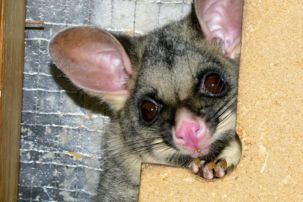Lesson summary
In this activity students complete a survey of the native animals at their school. This activity consists of four individual activities for gathering survey data help students match how various animals use the school grounds.
Learning intentions:
Students will...
- recognise there are a range of different native animals at their school.
- understand that animals can be identified through the traces they leave behind as well as through visual sitings.
- understand that there are a range of habitat types at their school.
Lesson guides and printables
Lesson details
Curriculum mapping
Australian curriculum content descriptions:
Science Year 7:
- There are differences within and between groups of organisms; classification helps organise this diversity (ACSSU111)
- Interactions between organisms can be described in terms of food chains and food webs; human activity can affect these interactions (ACSSU112)
Geography Year 7:
- Collect, select and record relevant geographical data and information, using ethical protocols, from appropriate primary and secondary sources (ACHGS048)
Science Year 8:
- Science and technology contribute to finding solutions to a range of contemporary issues; these solutions may impact on other areas of society and involve ethical considerations (ACSHE135)
- Science understanding influences the development of practices in areas of human activity such as industry, agriculture and marine and terrestrial resource management (ACSHE136)
Geography Year 8:
- Collect, select and record relevant geographical data and information, using ethical protocols, from appropriate primary and secondary sources (ACHGS056)
Science Year 9:
- Ecosystems consist of communities of interdependent organisms and abiotic components of the environment; matter and energy flow through these systems (ACSSU176)
- People can use scientific knowledge to evaluate whether they should accept claims, explanations or predictions (ACSHE160)
- The values and needs of contemporary society can influence the focus of scientific research (ACSHE228)
Geography Year 9:
- The distribution and characteristics of biomes as regions with distinctive climates, soils, vegetation and productivity (ACHGK060)
- Collect, select, record and organise relevant geographical data and information, using ethical protocols, from a range of appropriate primary and secondary sources (ACHGS064)
Science Year 10:
- People can use scientific knowledge to evaluate whether they should accept claims, explanations or predictions (ACSHE194)
- The values and needs of contemporary society can influence the focus of scientific research (ACSHE230)
Geography Year 10:
- The human-induced environmental changes that challenge sustainability (ACHGK070)
- The application of geographical concepts and methods to the management of the environmental change being investigated (ACHGK074)
Cross curriculum priorities:
Sustainability – OI.1 – The biosphere is a dynamic system providing conditions that sustain life on Earth. O1.2 – All life forms, including human life, are connected through ecosystems on which they depend for their wellbeing and survival.
General capabilities:
Critical and creative thinking, ethical understanding
Syllabus Outcomes: GE5-1, GE5-2, GE5-3, GE5-4, GE5-5, GE4-7, GE5-7, SC4-14LW, SC4-15LQW, SC4-11PW, SC4-13ES, SC5-14LW, SC5-11PW, SC5-13ES.
Connecting lessons: Biodiversity audit – must be completed as a compulsory action.
Resources required
- Internet access
- students worksheet
- collecting jars or plastic petrie dishes
- school ground map (use Google Maps or Flash Earth if hard copy unavailable)
- Scat identification sheet.
- Optional: binoculars.
Additional info
This lesson can be used when working on the Biodiversity Module of ResourceSmart AuSSI Vic Certification. By completing this lesson you will have completed the following actions:
Compulsory Actions:
- A1.1 – Have you identified, monitored and documented the native animals at your school? E.g. using motion-sensing cameras in nesting boxes, visual audits, scat and track identification, bird observations or photo point monitoring?
Checklist data goals:
- No data goals.


Welcome back!
Don't have an account yet?
Log in with:
By signing up to Cool.org you consent and agree to Cool's privacy policy to
store, manage and process your personal information. To read more, please see
our privacy policy here(Opens in new tab).
Create your free Cool.org account.
Many of our resources are free, with an option to upgrade to Cool+ for premium content.
Already have an account?
Sign up with:
By signing up to Cool.org you consent and agree to Cool's privacy policy to
store, manage and process your personal information. To read more, please see
our privacy policy here(Opens in new tab).